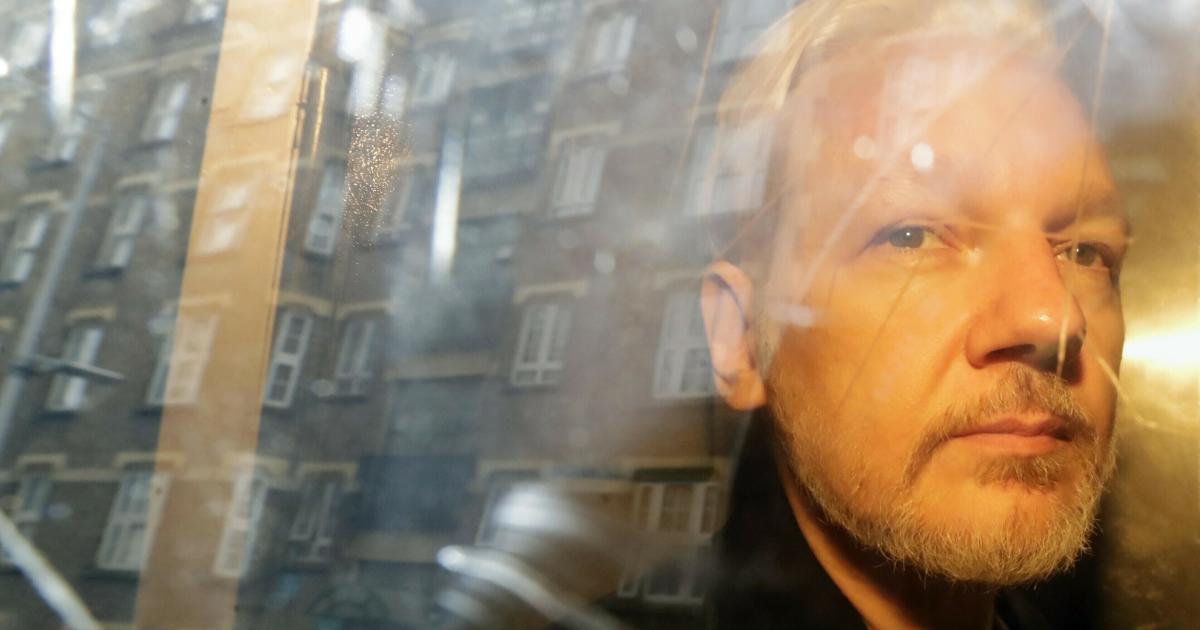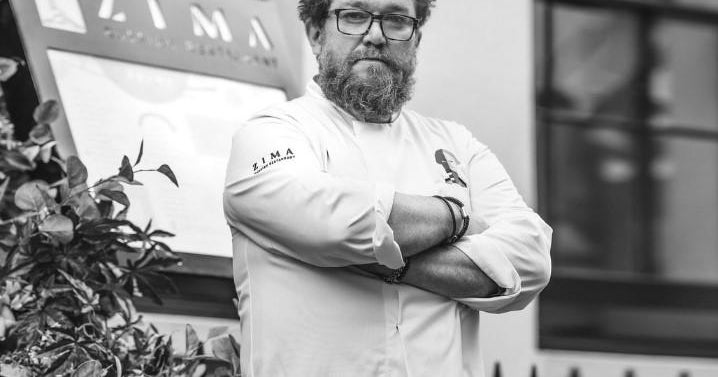CBS News
What to know as Julian Assange faces a ruling on his U.S. extradition case over WikiLeaks secrets

London — Lawyers for Julian Assange were making their final appeal to a U.K. court Tuesday against plans for the WikiLeaks founder to be extradited to the U.S. to face espionage charges related to government secrets he spilled on his website. Assange, who has been imprisoned in London for almost five years, used WikiLeaks to publish a huge number of confidential documents and other materials, some of which related to war and espionage, arguing the public had a legitimate right and need to possess the information.
The 52-year-old Australian journalist and activist has been battling the American extradition bid for more than a decade. On Tuesday, his legal team was to ask two London High Court judges to grant him a new appeal hearing against the British government’s 2022 decision that he can be legally extradited to the U.S.
Yui Mok/PA Image/Getty
Assange’s wife Stella walked into the court Tuesday through a large group of supporters demanding her husband’s immediate release.
What is this hearing about?
If the judges grant Assange the right to launch a fresh appeal it will enable him to ask the European Court of Human Rights to block the extradition. If the appeal is rejected — and possibly even if the court rules in his favor, he’s likely to be put on a plane to face the U.S. courts as the extradition order has been signed for about a year and a half.
The High Court judges, Victoria Sharp and Jeremy Johnson, could take weeks to consider their ruling, but the hearing is scheduled to take place for two days, so a verdict could be issued as soon as Wednesday.
Matt Dunham/AP
What are the charges against Assange in the U.S.?
In 2019, a federal grand jury in Virginia indicted Assange on 18 charges over the publication of classified documents in 2010. The charges include 17 counts of espionage and one charge of computer intrusion.
In a statement, the U.S. Department of Justice said Assange was complicit in the actions of Chelsea Manning, a former U.S. Army intelligence analyst, in “unlawfully obtaining and disclosing classified documents related to the national defense.”
One of the most contentious of WikiLeaks’ publications was video from a 2007 U.S. military helicopter strike in Baghdad that killed 11 people.
What sentence could Assange face if convicted?
Assange could face up to 10 years in prison for every count of espionage he’s convicted on, and five years for the conspiracy to commit computer intrusion, according to the Department of Justice.
If he were convicted on all the charges, he could face a total of 175 years in prison, though the sentence would likely be lower.
What do Assange’s supporters say?
The fight to stop Assange’s extradition to the U.S. has been linked by many of his supporters to the fight for press freedom and the right to a fair trial. The Guardian newspaper argued in its editorial section this week that journalists need whistleblowers such as Assange, particularly on matters of national security.
Rebecca Vincent, campaign director for the Reporters Without Borders group, said in a statement that even if this final appeal is rejected, “it remains within the U.S. government’s power to bring this judicial tragedy to an end by dropping its 13 year-old case against Assange and ceasing this endless persecution. No one should face such treatment for publishing information in the public interest. It’s time to protect journalism, press freedom, and all of our right to know.”
Assange’s physical and mental wellbeing have also been called into question.
Amnesty International have said if Assange is extradited he faces a “risk of serious human rights violations including possible detention conditions that would amount to torture and other ill-treatment.”
“There could not be more at stake in a single court case than there is in Julian’s case,” Stella Assange said in a statement issued Monday, calling for supporters to protest in front of the Royal Courts of Justice in London on Tuesday and Wednesday, when the appeal hearings are scheduled to take place. “Journalists must have the right to report the facts that governments and corporations want to hide, otherwise a truly free press is impossible.”
In an interview with the BBC, she said her husband would not survive an extradition to the U.S. because of his physical and mental fragility.
“This case will determine if he lives or dies, essentially,” she told the CBS News partner network.
What was Assange arrested for in the U.K.?
In 2012, Assange took refuge at the Ecuadorian Embassy in London to avoid being extradited to Sweden, where he was facing sexual assault allegations that were later dropped.
After Assange spent about seven years holed up in the embassy, Ecuador revoked his asylum status in 2019, when the Central American country’s president said his government had “reached its limit on the behavior of Mr. Assange.”
Assange was formally placed under arrest by London’s Metropolitan Police the moment he left the embassy for failing to surrender to the court over a warrant issued in 2012, and he has been in custody ever since.
CBS News
Photographing the rooms of kids killed in school shootings

An unmade bed
A library book 12 years overdue
The next day’s outfit
Notes to her future self

Click on the door to enter
CBS News
How do you make a portrait of a child who isn’t there? Photographer Lou Bopp found a way, but it wasn’t easy.

In early 2018, I was deplaning after an 18-hour flight when Steve Hartman called. He had an idea: to photograph the still-intact bedrooms of kids who had been killed in school shootings.
It’s a headful. And six years later, I still don’t have an “elevator pitch” for the project — but then, I don’t often talk about this project. It is by far the most difficult I have ever worked on.
When Steve, my friend of about 25 years, asked me if I would like to be involved, I said yes without hesitation — even though I didn’t think we would get any families to agree. There is no way that I would have said no to partnering with him on this.
Emotionally, I was not sure how I would get through it. Within a few months I was on my way to Parkland, Florida. Alone. I’m not sure that I realized that I would be on my own.
But here I was. An on-location commercial photographer who focuses on people and pets to create compelling, honest, textural and connective moments for large brands, per my LinkedIn professional profile, on a project where there is no one to take photos of — for the most brutal of reasons.
How do you make a portrait of a child who is not there?
In each of these children’s rooms — the most sacred of places for these families — there was the sense that the child had just been there, and was coming right back. It was as if they’d just left their room like that when they went to school in the morning and were returning in the afternoon.
I wanted to capture that essence.
Most kids’ bedrooms are their very own special places, and these were no different. I looked everywhere, without touching anything. I photographed inside trash cans, under beds, behind desks. Their personalities shone through in the smallest of details — hair ties on a doorknob, a toothpaste tube left uncapped, a ripped ticket for a school event — allowing me to uncover glimpses as to who they were.
But there was an emotional challenge in addition to that creative one. Over the course of more than six years, we visited with many families around the country. The parents I spoke with seemed grateful that I was there. But each time I received a call or text from Steve about a new family, my heart sank.
It meant another family had lost a child.
I find it unfathomable that children being killed at school is even an issue. It makes no sense. It’s impossible to process. The night prior to each one of the family visits, I didn’t sleep. And I knew I wouldn’t going into the project. It’s not a self-fulfilling prophecy. It is nerves. And empathy. And sorrow. And fear.
In my notes from early on in the project, back in 2018, writing in seat 6H on the flight back from Nairobi, I reflected on the emotional task ahead.
“This is going to be one of the most difficult things ever, emotionally, for me, and not just work related. As I read my research documents, I get visibly emotional,” I wrote, noting my gratitude that the dark cabin prevented the other passengers from seeing me.
The prospect brought my own fears to the fore, both for myself — “I can’t help thinking about Rose,” my daughter, “and what if. I’ve lost sleep over envisioning the what-ifs well before Parkland” — and about and for meeting the families in the project: “When I read about April & Phillip and Lori’s plight, I somehow, for some reason put myself in their emotional position even though that is impossible, I have no idea, it’s beyond comprehension, I do not know what they feel. I do not know what I am going to say to them, I’m scared beyond belief. And alone.”
But just days later, I was photographing the first assignment for the project: Alyssa Alhadeff’s room. She was just 14 years old when she walked out of that room to head to Marjory Stoneman Douglas High School. I was shaky meeting the family friend who greeted me at the house. Her daughter was Alyssa’s best friend, and a photo of the two girls was on the table.
According to my notes, “The room was a beautiful teenager’s messy room. My emotions were kept in check the way that they usually are; By hiding behind the camera. I removed my shoes before entering. My heart was pounding and it reverberated through my body and soul, I felt like I was in one of the most sacred and special places on Earth. I was so careful not to touch anything.”
I left feeling ready to explode in sadness and anger.
Later that day, I photographed Carmen Schentrup’s room. Her younger sister had survived the Parkland shooting, but 16-year-old Carmen was killed in her AP Psychology class. Meeting her parents, April and Phillip, was what I was most scared of.
“I feel so much pain and compassion for them and I don’t want to say the wrong thing, drop cliches etc.,” I wrote at the time. “I spoke to Steve for guidance. He said, just be you. That’s all I can do. Just be me. He was right, those three words helped carry me through this entire project. Just be me.”
April let me in, and I worked quickly, only meeting Phillip as I was leaving. “The conversation felt like we all three were just trying to hold it together. I cannot imagine what they are going through, my heart hurts for them. This was / is such a painful project, and reconciling it will be impossible.
“I think about how anything can happen at any time to any of us. Literally. You never know,” I wrote.
After only about 16 hours on the ground in Florida, I was done with the first portion. I felt the project was a must, but I also dreaded the next call from Steve about the next family. I didn’t know when that call would come — many years later, or the very next day, possibly never.
But last month, we — and the documentary crew that filmed us working — completed this project. While I haven’t seen it yet, I know Steve’s piece won’t be a typical Steve Hartman segment. How could it be? I know he struggled too, and we both have spent a lot of time processing this.
I remember one August evening, I was devastated as I left the home of one of the families. Within minutes, I passed an ice cream shop crowded with other families — seemingly carefree, full of joy and laughter. The juxtaposition, mere minutes apart, cracked my soul.
I hope some way, somehow, this project can facilitate change — the only possible positive outcome for this I could comprehend. After the news cycle ends, these families will still be living with an incomprehensible nightmare.
CBS News
Standing on the threshold of grief, documenting the bedrooms of kids killed in school shootings

I never wanted to be this kind of reporter, knocking on the door of someone who lost a child in a school shooting. And yet there I stood, knocking, nonetheless.
I found myself here, standing on the threshold of grief across the country, after years of pent-up frustration. By 2018, America’s school shooting epidemic had taken a toll on me. There were so many that the news coverage felt like a treadmill. It seemed to me the country had grown numb and lost its empathy for the victims and the families. I wanted to do something.
For help, I reached out to Lou Bopp, one of the best still photographers in the country. But he said he had never faced a challenge quite like this: “to take a portrait of a person who’s not there.”
On March 27, 2023, Chad and Jada Scruggs lost their daughter, Hallie, in the Covenant School shooting in Nashville. She was 9 years old, the youngest of four, and their only daughter.
Looking back at photos of Hallie, Chad recalled how she loved sports and had “more stitches than any of her brothers.”
“It was just a lot of fun having a daughter,” Jada said.
“We had a chance to have her for 9 and a half years, and that was far better than not having her at all,” Chad said.
But their goodbye isn’t quite complete. They’re still living with her bedroom.
Over the past six years, eight families from five school shootings invited us into these sacred spaces, allowing Americans to see what it’s like to live with an empty child’s bedroom.
We traveled to Uvalde, Texas, where a gunman killed 19 children and two teachers at Robb Elementary School, including 9-year-old Jackie Cazares.
Jackie’s parents Javier and Gloria say people are always telling them that they can’t imagine what they’re going through. But they say we need to imagine, and that’s why they invited us in.
“It just makes everything more real for the public, for the world,” Gloria said. “Her room completely just speaks of who she was.”
In Jackie’s room, we saw the chocolate she saved for a day that never came, evidence of the dream vacation she never got to take, and the pajamas she never wore again.
It struck us how many of the rooms remained virtually untouched, years after the shooting.
Frank and Nancy Blackwell lost their 14-year-old son Dominic in the Saugus High School tragedy near Los Angeles. That was 2019, but inside his room, it felt like it was yesterday.
“We just decided to keep everything as it was from when he last went to school that day,” Frank said. “He didn’t prepare his room to be photographed. He didn’t put away his stuffed animals because he was worried about who might see it. He woke up, he got dressed, and he left to go to school. And he thought he was coming back. And we all expected him to come back.”
So many rooms wait for a child that will never return.
Charlotte Bacon was murdered in Newtown, Connecticut, in 2012, six weeks after Halloween. Her room holds the last library book the 6-year-old checked out, now 12 years overdue.
Luke Hoyer, 15, was killed in Parkland, Florida, on Valentine’s Day in 2018. When we visited his home, his bed was just as he left it.
Alyssa Alhadeff, 14, was also killed in the Parkland shooting. The whirlwind that was her room had fallen still.
Carmen Schentrup was yet another Parkland victim. The watch she got for her 16th birthday still ticks, but the motivational sayings that filled her room resonate no more.
The decision to either keep a room as it was or pack it up and repurpose it tortures many parents.
Bryan and Cindy Muhlberger lost their 15-year-old daughter, Gracie, in the Saugus shooting. They told us they often talk about what to do with her room.
“Because when I do go in there, I feel her presence,” Cindy told us.
Bryan wondered, “And so when that time comes that the room is not there, does she go away?”
I didn’t realize what an albatross the rooms are for some families.
“I will just say I have a pretty confusing relationship with [Hallie’s] room now,” Chad said. It’s extremely painful, but there’s a lot of moments where you want to be sad — because the sadness is a part of connecting with her.”
Hallie’s room also brings them smiles, too, Chad and Jada told us as they showed us a kitty cat hoodie that Hallie wore all the time.
The rooms really are a rainbow of emotion, all at once tender as a lullaby and shocking as a crime scene. Clues gather dust, leading us past all the places these kids had been up until that very moment when everything stopped so suddenly that there wasn’t even time to close the lid on the toothpaste tube.
In the end, we took more than 10,000 photographs. These parents hope that at least one of these pictures will stick with you, that you will forever carry a piece of their pain and use that heartache to stem the tide of all these empty rooms.











